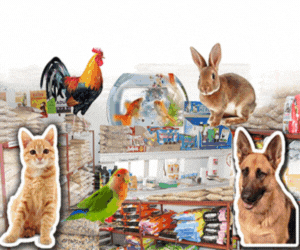Rust-en-Vrede Gallery + Clay Museum launch inaugural SA Clay Awards in recognition of ceramic excellence in South Africa.
Prompted by its acceptance as an affiliate member of the International Academy of Ceramics (IAC), The Rust-en-Vrede Gallery + Clay Museum has announced the launch of the inaugural SA Clay Awards, which will exhibit its winning pieces from 2 November to 7 December 2024 for the first time.
As an organisation affiliated to Unesco and devoted to ceramic excellence, the IAC nod was seen as a fittingly momentous opportunity to propose a new biennale award and exhibition, in recognition of the wealth of skill and talent in the South African ceramics landscape.
Alternating annually with the Portrait Award the inaugural SA Clay Awards celebrates mastery and creativity in the field. A novel structure meant that anyone could enter, and sees the top 50 pieces acknowledged rather than a singular winner. Uniquely, the sponsored awards money will also be shared equally between the creators of the final selection.
This speaks to the versatility of the medium. With so many ways to interpret, work with and express a concept through clay, choosing one winner would have been next to impossible. “We were really pleased with the range of work entered. A collection of pieces like this shows you the wonder of clay, and what clay can do,” says Hennie Meyer, curator of the show and a prolific ceramic artist in his own right.
The vision was for an exhibition that would showcase ceramic excellence and capture the essence of the current scene in South Africa. “The concept for this exhibition has long intrigued me – it aims to present a diverse, unbiased collection of clay works that go beyond the singular perspective of any curator or gallery. An embodiment of excellence, richness, expression, concept, and craftsmanship,” he adds.
Digging Deep: Inside the Clay Awards Judging Process
And certainly, the judging process played a big role in showcasing this depth. A group of 10 respected international and local panelists – experts in their fields, ranging from renowned ceramic artists to revered academics – ensured that a wide range of viewpoints were part of the assessment of the works. Selectors included Magdalene Odundo (UK/Kenya), Andile Dyalvane (South Africa); Ronnie Watt (Canada/South Africa); Andre Hess (UK/South Africa); Digby Hoets (South Africa); Olivia Barrell (South Africa); Janet de Boos (Australia); Guangzhen Zhou (USA/China); Stanis Mbwanga (Congo) and Elizabeth Perril (USA).
Each panelist chose their top 50 pieces, with the 50 most voted pieces (by 45 artists) overall forming the final selection. The judging was conducted anonymously, allowing selectors to choose works without any contact or deliberation among one another.
This ensured not only a fair judging process but a great variety of work in the final selection. What was also interesting for Hennie and his team as the results came back was that out of 518 entries, 260 received votes. “This shows us that not only was the work extremely diverse but also of an incredibly high standard,” he notes.
Diversity is clearly apparent too, in the incredible variety of the entrants themselves. They range from established names and stalwarts of the ceramics industry to brand-new talents entering the medium. Wonderful variety and rich stories emerge – from the oldest entrant, Felicity Potter who was born in 1935, and who entered a piece with her partner David Schlapobersky, to well-known brothers Madoda and Siyabonga Fani both with pieces in the lineup, and many more besides.
Pieces vary greatly in style and execution too – expressive figurative sculptural works stand alongside delicate functional vessels and contemporary graphic designs sit next to the ultra-minimal. It’s a truly multifaceted curation that speaks volumes about the medium itself, and the wide spectrum of creativity locally. Curated by Meyer, the works will be displayed in such a way as to highlight exactly this diversity and versatility.
Meyer refers to the words of Ashraf Jamal in his essay An Intimate Materialism published in Clay Formes (2023) to summarise the richness of the medium: “As Caitlin MacDonald reminds us, ‘We have constructed shelters, vessels for food and water, made idols, art objects, vases, currencies, talismans, funerary urns, inscribed laws and myths upon clay surfaces.’ We are wrought from mud. Clay precedes humankind; it will exist long after we are gone.”
To Meyer, “this profound sentiment reflects the enduring relationship between humanity and this fundamental material”. SA Clay Awards invites you to explore the stories and emotions conveyed through each piece in this exhibition – a collective homage to the rich heritage and future of ceramic artistry in South Africa.
Open to the public from Saturday 2 November the works will be on display at the Rust-en-Vrede Gallery + Clay Museum until 7 December 2024.
List of awardees:
Barker, Melissa
Bernstein, Bianca
Botha, Deirdre
Brett, Justin
Claassens, Lissa
Cronjé, Ella
Cruise, Wilma
Dahl, Astrid
Fani, Madoda
Fani, Siyabonga
Glenday, Katherine
Godwin, Sandy
Gregor, Mariëtte
Haines, Charmaine
Heesom-Green, Dianne
Hoets, Lesley-Ann
Hön, Eugene
Jarvis, Jane
Kotzé, Karin
Lambert, Dale
Louridas, Gari
Luthuli, Sbonelo
Jonker, Niël
Maweni, Chuma
May, Meriel
Mogridge, Andrew
Nthunya, Sesing Frank
Potter, Felicity
Price, Gregg
Rybicka, Amanda
Schlapobersky, David
Scott, Johannes
Sherlock, Adéle
Shirley, John
Sithole, Nicholas
Spencer, Nada
Swart, Johan
Van der Merwe, Uys
Van der Walt, Clementina
Van Rooyen, Karlien
Von Bismarck, Wiebke
Walford, Andrew
Walsh, Nick
Walter, Guy
Wentzel, René
Wilkinson, Geena
For more information visit www.rust-en-vrede.com/clayawards and follow @rust_en_vredegallery on social media.
Rust en Vrede Gallery is situated at 10 Wellington Road, Durbanville. Opening hours: Monday – Friday, 10h00-16h00 and on Saturdays, 9h00-13h00.
Genie Vittu
Communication Strategist
Ten x Collective
Soweto Sunrise News


































